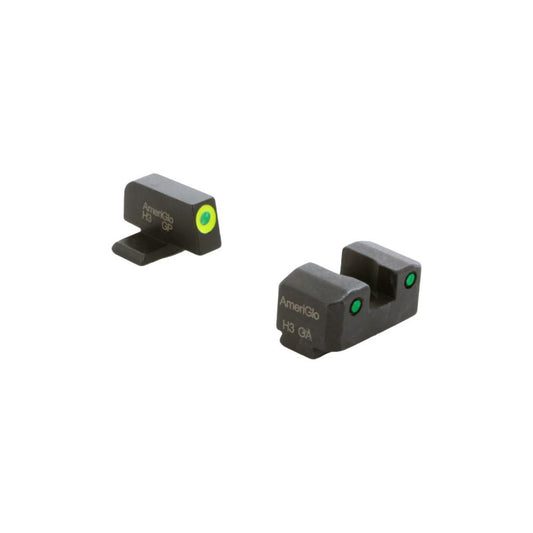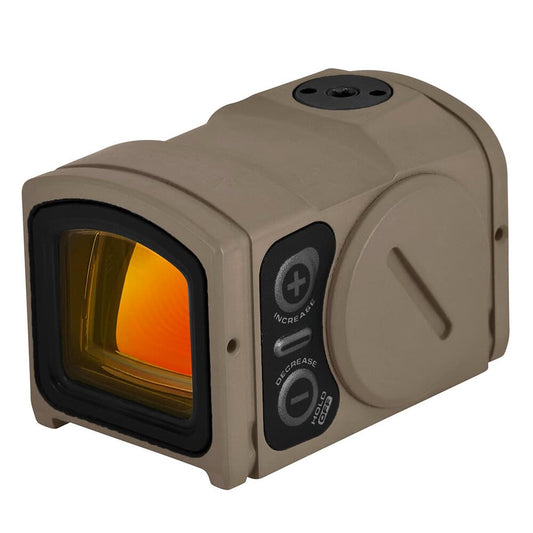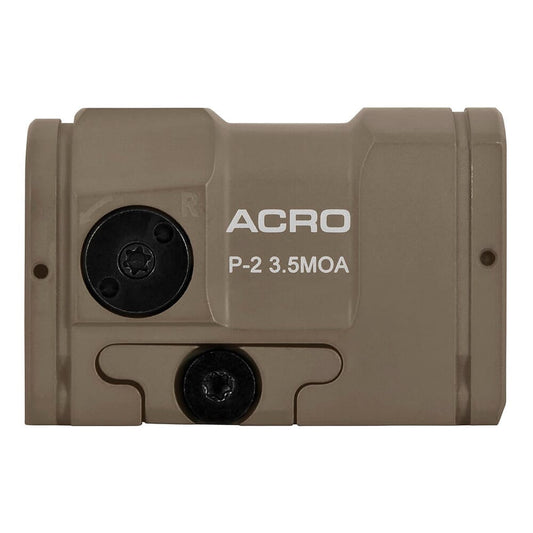

Ameriglo Trooper Tritium Handgun Sight Set enhances targeting efficiency for Springfield XD models, featuring a three-dot sight system that provides quick alignment in various lighting conditions. The green tritium inserts in the rear and Lumigreen front sight ensure visibility in low-light environments, making it suitable for both day and nighttime use. This sight set is designed for straightforward installation, allowing users to upgrade their handgun for improved accuracy and confidence.
Constructed with a serrated square notch rear sight, this set minimizes glare while optimizing sight picture clarity. The ProGlo front sight provides an intuitive aiming point, making target acquisition faster and more reliable. Whether you're at the range or in a defensive situation, the Trooper series aims to enhance your shooting experience.
Features:
- TRITIUM ILLUMINATION for clear sighting in low light conditions.
- QUICK TARGET ACQUISITION with a three-dot design for easier alignment.
- COMPATIBLE with all Springfield XD models for versatile use.
- GLARE-RESISTANT serrated rear sight enhances visibility in bright environments.
- PROGLO FRONT SIGHT provides a bright, easily identifiable aiming point.
- DURABLE MATERIAL ensures longevity and withstands rugged use.
- USER-FRIENDLY installation process for hassle-free upgrades.
- OPTIMIZED FOR ACCURACY to boost shooting performance for all skill levels.
Technical Specifications Table
| Feature | Specification |
|---|---|
| Model Compatibility | All Springfield XD Models |
| Front Sight Type | ProGlo |
| Rear Sight Type | Serrated Square Notch |
| Illumination | Green Tritium and Lumigreen |
| Material | Steel |
| Dimensions | Standard for Springfield XD |
| Weight | Lightweight Design |
What's in the Box?
- Front Sight - ProGlo
- Rear Sight - Serrated Square Notch
- Installation Instructions
Customer Reviews
"The Trooper sights made a noticeable difference in my accuracy, especially in low light!"
"Installation was easy, and they have held up well during use at the range."
"Highly recommend these for anyone looking to improve their Springfield XD's performance!"
FAQ
Are the Ameriglo Trooper sights easy to install? Yes, the sights are designed for straightforward installation on all Springfield XD models. Detailed instructions are included, and most users can complete the installation with minimal tools.
How do the tritium inserts perform compared to traditional sights? Tritium inserts provide a consistent glow in low-light conditions, making them easier to see than standard sight dots. This feature is particularly valuable for defensive situations or night shooting.
Can I use these sights for competition shooting? Yes, the Ameriglo Trooper sights are suitable for various shooting applications, including competitions. Their quick target acquisition capabilities can give you an edge in timed scenarios.
Similar Models
If you're looking for more sight options, explore our range of Ameriglo products, including the Ameriglo Bold Sight Set for Glock and the Ameriglo Pro I-Dot Night Sight Set. Each model offers unique benefits tailored to enhance your shooting experience. Discover the complete Ameriglo collection to find the perfect fit for your firearm.
You May Also Like
Here’s some of our most similar products people are buying. Click to discover trending style.








